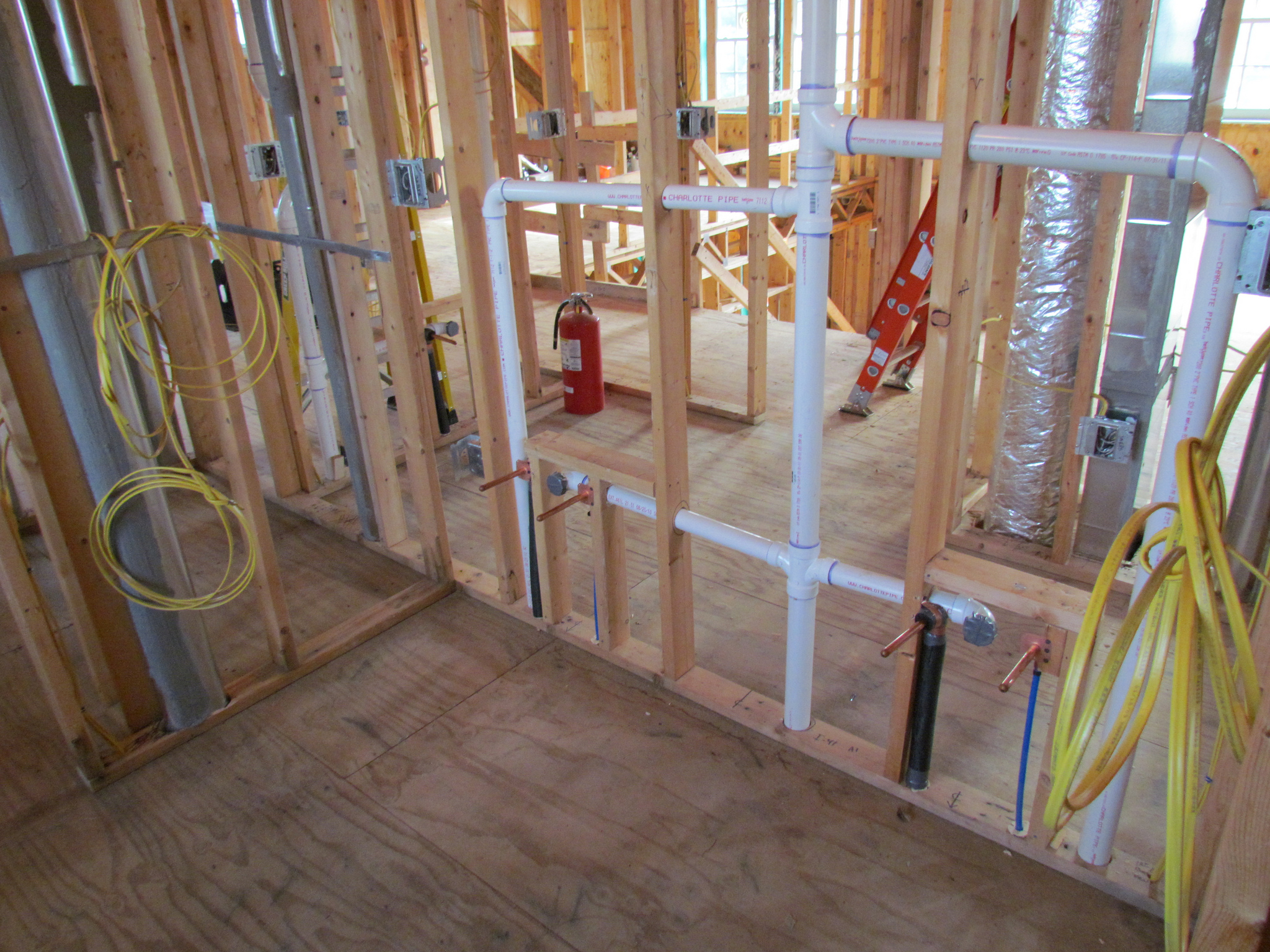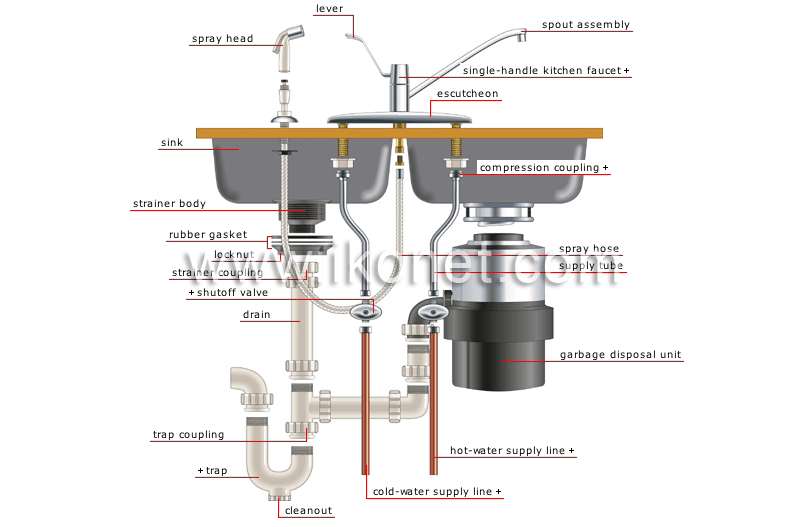Understanding The Anatomy of Your House's Plumbing System
Understanding The Anatomy of Your House's Plumbing System
Blog Article
Listed here in the next paragraphs you can find additional awesome expertise related to Anatomy of a House: Understanding the Components.

Comprehending exactly how your home's plumbing system works is vital for each property owner. From providing clean water for drinking, cooking, and bathing to securely getting rid of wastewater, a properly maintained pipes system is important for your family members's wellness and convenience. In this thorough guide, we'll discover the elaborate network that composes your home's plumbing and offer ideas on upkeep, upgrades, and taking care of usual concerns.
Introduction
Your home's pipes system is greater than just a network of pipes; it's a complex system that ensures you have access to tidy water and reliable wastewater elimination. Knowing its parts and just how they collaborate can help you prevent costly repair services and ensure whatever runs smoothly.
Standard Elements of a Plumbing System
Pipes and Tubes
At the heart of your plumbing system are the pipelines and tubing that bring water throughout your home. These can be constructed from numerous materials such as copper, PVC, or PEX, each with its benefits in terms of longevity and cost-effectiveness.
Fixtures: Sinks, Toilets, Showers, and so on.
Fixtures like sinks, toilets, showers, and bath tubs are where water is made use of in your house. Comprehending just how these components connect to the plumbing system helps in detecting problems and intending upgrades.
Shutoffs and Shut-off Points
Shutoffs control the circulation of water in your plumbing system. Shut-off shutoffs are vital during emergency situations or when you need to make fixings, enabling you to isolate parts of the system without interrupting water circulation to the whole house.
Water System System
Main Water Line
The major water line connects your home to the metropolitan water supply or a personal well. It's where water enters your home and is dispersed to different fixtures.
Water Meter and Pressure Regulatory Authority
The water meter steps your water use, while a pressure regulatory authority guarantees that water moves at a safe stress throughout your home's plumbing system, stopping damages to pipes and components.
Cold Water vs. Warm water Lines
Comprehending the distinction in between cold water lines, which supply water straight from the main, and hot water lines, which lug heated water from the hot water heater, aids in troubleshooting and preparing for upgrades.
Drainage System
Drain Pipes Piping and Traps
Drain pipes bring wastewater far from sinks, showers, and toilets to the drain or septic system. Traps avoid sewage system gases from entering your home and also trap particles that can cause blockages.
Air flow Pipelines
Ventilation pipes enable air right into the drainage system, stopping suction that can slow drain and trigger traps to vacant. Correct ventilation is important for keeping the honesty of your plumbing system.
Significance of Appropriate Water Drainage
Ensuring correct drain stops back-ups and water damage. Consistently cleaning drains and preserving traps can stop pricey fixings and extend the life of your plumbing system.
Water Heating Unit
Types of Water Heaters
Water heaters can be tankless or standard tank-style. Tankless heating systems warm water on demand, while storage tanks keep heated water for instant usage.
Updating Your Pipes System
Factors for Updating
Updating to water-efficient fixtures or replacing old pipes can improve water quality, decrease water expenses, and enhance the value of your home.
Modern Pipes Technologies and Their Advantages
Check out technologies like smart leak detectors, water-saving toilets, and energy-efficient water heaters that can save money and reduce ecological influence.
Cost Factors To Consider and ROI
Determine the in advance expenses versus long-lasting cost savings when considering pipes upgrades. Several upgrades spend for themselves via lowered energy expenses and fewer repair services.
Exactly How Water Heaters Link to the Plumbing System
Recognizing just how hot water heater link to both the cold water supply and hot water distribution lines aids in diagnosing concerns like inadequate warm water or leakages.
Maintenance Tips for Water Heaters
Regularly flushing your water heater to get rid of debris, checking the temperature level settings, and examining for leakages can prolong its lifespan and enhance power efficiency.
Usual Plumbing Concerns
Leaks and Their Causes
Leakages can occur as a result of aging pipes, loosened fittings, or high water pressure. Resolving leakages without delay avoids water damages and mold growth.
Obstructions and Blockages
Obstructions in drains and commodes are commonly caused by flushing non-flushable products or an accumulation of grease and hair. Using drain displays and being mindful of what drops your drains can avoid blockages.
Indicators of Pipes Problems to Look For
Low tide pressure, sluggish drains pipes, foul odors, or uncommonly high water costs are signs of potential plumbing troubles that should be attended to promptly.
Plumbing Upkeep Tips
Regular Assessments and Checks
Schedule annual pipes examinations to catch problems early. Seek signs of leakages, deterioration, or mineral buildup in faucets and showerheads.
DIY Upkeep Tasks
Straightforward tasks like cleaning tap aerators, looking for toilet leaks utilizing color tablet computers, or shielding exposed pipes in chilly environments can protect against major plumbing problems.
When to Call an Expert Plumbing Professional
Know when a pipes concern requires professional know-how. Attempting complicated repair work without appropriate knowledge can bring about even more damages and greater repair service expenses.
Tips for Decreasing Water Usage
Easy practices like dealing with leakages promptly, taking shorter showers, and running full tons of laundry and meals can preserve water and reduced your utility expenses.
Eco-Friendly Pipes Options
Consider lasting pipes products like bamboo for floor covering, which is durable and eco-friendly, or recycled glass for countertops.
Emergency Preparedness
Steps to Take During a Plumbing Emergency
Know where your shut-off shutoffs lie and just how to switch off the supply of water in case of a burst pipe or major leakage.
Importance of Having Emergency Contacts Handy
Maintain call details for local plumbers or emergency solutions conveniently available for quick reaction during a plumbing dilemma.
Ecological Effect and Conservation
Water-Saving Fixtures and Appliances
Mounting low-flow faucets, showerheads, and toilets can dramatically lower water use without compromising performance.
DIY Emergency Fixes (When Relevant).
Momentary fixes like using air duct tape to spot a leaking pipe or positioning a container under a dripping tap can decrease damages till a specialist plumbing professional shows up.
Verdict.
Recognizing the composition of your home's plumbing system encourages you to keep it effectively, conserving time and money on fixings. By complying with routine maintenance regimens and staying educated regarding modern-day pipes technologies, you can guarantee your plumbing system runs effectively for years ahead.
HOW YOUR PLUMBING SYSTEM WORKS
Which Pipes Do What?
Blue lines = fresh water supply entering the building Red lines = hot water supply entering the building Grey lines = pipes carrying waste away from the building and venting pipes carrying gases away from the building (through the roof) YOUR MAIN PLUMBING SYSTEMS
There are two main plumbing systems that support your home s basic plumbing needs one that brings clean water into your home, and one that sends dirty water away from your home. Connected to the toilet, bath, shower, and other faucets in your home, these two systems keep your water flowing in the right directions.
ACCESSING FRESH WATER
Fresh and clean water is brought into your home through the main water supply line . Filtered through one pipe, this water is pressured to flow into the various fixtures in your home at any given time.
This water can be sourced from a well located on your property, a pond or river (mostly cottages), or, as in most cases, from the city s municipal water treatment centre. However, it is important to note that water that is untreated, such as the water siphoned from ponds or rivers, may not be safe to drink. Personal water supplies always need to be treated for hardness and contaminants before consumed.
MUNICIPAL WATER SUPPLIES
Improve taste and odour Remove sediment Eliminate hardness Reduce chlorine COLD WATER SUPPLY VS. HOT WATER SUPPLY
Cold water flows into your home or building through the service line, which then distributes hot or cold water to your fixtures. This line is most commonly run through a central column that runs floor to floor. Hot water runs in short and straight pipes as the longer the pipeline, the more heat that will be lost in the transfer. Having shorter pipes also allows residents to access hot water more quickly.
WASTE WATER SYSTEM
Your wastewater system is divided into two parts pipes that send wastewater away from your home and venting pipes that send sewer gas away from your home. Sewage water travels through pipes that flush the water and waste towards local sewers that are operated and managed by your city or town. Most sewer systems rely on gravity to move the wastewater to where it needs to go.
The further away from your toilet or sink, the larger wastewater pipes become. This allows for waste to be disposed of from various parts of your home or business at once without pipe blockages. The angle and flow of these pipes are also essential for keeping your waste pipes clear of build up.
https://harrisplumbing.ca/how-your-home-plumbing-system-works/

As a fervent person who reads about Plumbing Installation 101: All You Need to Know, I assumed sharing that excerpt was worth the trouble. In case you enjoyed our blog post plz consider to pass it around. We love reading our article about Plumbing Installation 101: All You Need to Know.
Source Report this page